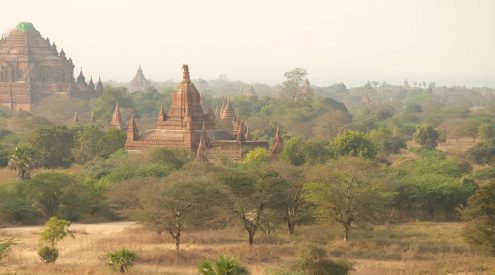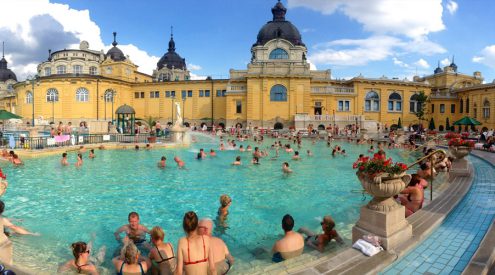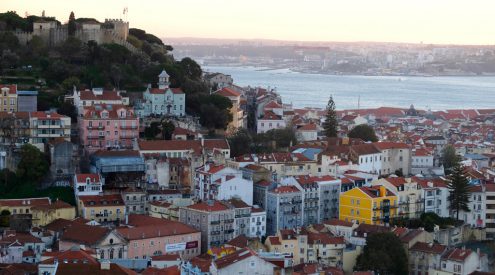We ran late on the first day of our overland tour of Tasmania – after taking the hops road to Mount Field National Park to do a walk through an amazing rainforest with spectacular waterfalls. We ended up driving this precipitous main road in the dark to our first stop. We had to keep our eyes peeled to left and right as an A-Z of wallabies, pademelons, wombats, quolls and possums tried to jump in front of the car. It was like riding the dodgems! These nocturnal animals get blinded by the glare of headlights.
We stayed overnight at Derwent Bridge (population: 12!), a mountain hamlet on the edge of Cradle Mountain National Park – near Lake St. Clair, the deepest lake in Australia. The legendary overland track through Cradle Mountain Park – rated one of the world’s top 10 hiking trails – starts and ends near here. We stayed overnight in the Derwent Bridge Chalets & Studios run by owners John and Louise Wendt – the ten self-catering chalets and studios with all mod-cons are great for overland travellers. Set on the edge of the forest, with wombats on your doorstep, the accommodation is very cosy – like a wooden Swiss chalet – complete with fires port and plunger coffee.
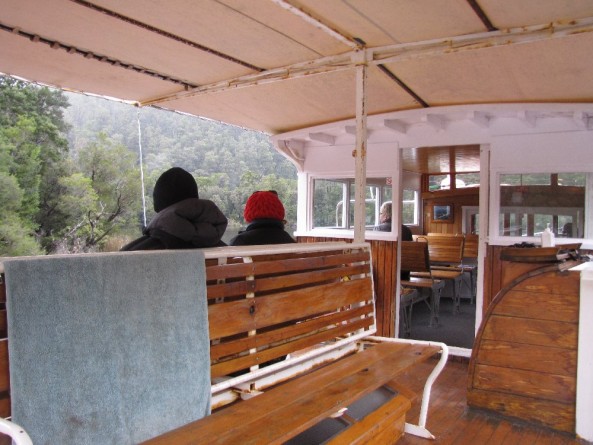
Out on the Pieman River on a vintage huon pine schooner
The wall in the wilderness nearby is one of the major tourist attractions in the highlands of Tasmania, attracting some 50 000 visitors per annum. Opened in March 2005, the wall is the brainchild of sculptor Greg Duncan who is carving a 100 metre long wall out of golden Huon pine panels which tell the story of the settlement and history of Tasmania. It is an incredible ten year labour of love. Carved in relief, the panels tell the tragic extinction of the Tasmanian tiger, devil, emu and the endangered wedge-tailed eagle – the history of the lumberjacks and settlers who conquered the wilderness. Greg creates this giant work by carving twelve hours a day 24/7!
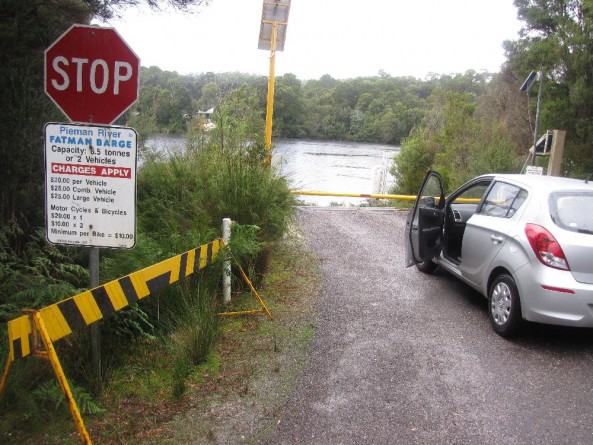
Crossing the Pieman River on the one-car fatman barge to Corinna
We then drive down to the wild west coast via Queenstown. On the way there are some amazing short walks to stretch your legs on the Lyell highway. We went looking for platypus at Lake Clair National Park, swung on a suspension bridge high above the Franklin river – and climbed to lookouts with long 360o views over the mountains, gorges and forests of the Franklin Gordon Wild Rivers National Park.
The west coast wilderness railway (1896) – one of the world’s great steam train rides from the old copper mining town of Queenstown across 42 bridges and gorges – was closed for the winter season – so we’ll have to go back to do that! We stopped for a fabulous lunch at the Linda Valley Café run by chef-owner Brandon Lane, one of the best restaurants on the west coast – set in the ruins of an old hotel. There’s a curious South African connection – a lookout called Spion Kopf named after the boer war!
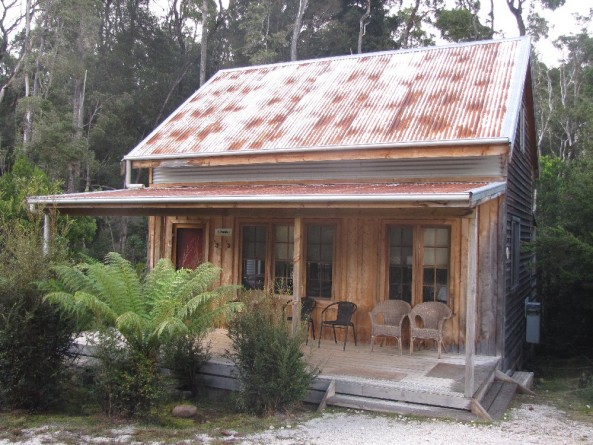
One of the old miner's cottages at Corinna wilderness sanctuary
One of the highlights of our trip through Tasmania was a cruise down the Gordon River. The remote coastal settlement of Strahan on the west coast was once one of Tasmania’s major supply harbours for the timber and mining companies. The Grining family, fifth generation Tasmanians who started the steamer ship trade in the 1800s, run daily world heritage cruises today on the Eagle, a sleek 220-seater river boat.
We spent an amazing day in the massive natural harbour, sailing out to Hell’s Gates, the narrow entrance channel – and sailing twenty kilometres upstream on the Gordon River to walk in one of the ancient rain forests – with 2000 year old huon pine trees and 150 species of moss and lichen. We went on an eerie walkabout on Sarah Island, among the ruins of one of the most brutal convict settlements in the early 1800s. Matthew Brady, the convict who escaped from Sarah Island – as well as the ten convicts who stole “the ship that never was” and sailed it all the way to Chile!
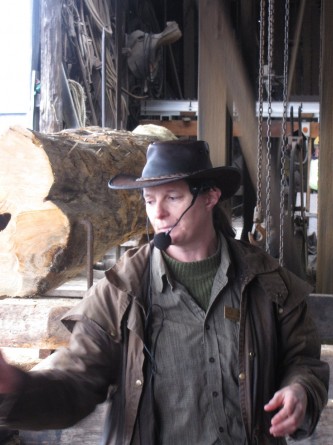
Old huon pine at the sawmill in Strahan
The area is known for its special species of cat – though it’s manmade and not a natural Tasmanian species. The Macquarie cat was the feared name given to the three cat ‘o nine tails used by the flagellator of Sarah Island who tied three together, put lead in the tail and used to flog errant convicts with twenty seven lashes in one go.
Apparently the officers on the island dined on stuffed echidnas (anteaters), wallabies and swans baked in the ovens we saw at the island settlement. Dem were the bad old days. On a happier note you can eat wonderful ocean trout farmed in the harbour at Strahan today – as well as wonderful local crayfish and scallops. The local fish ‘n chip shops are great value when travelling on the Rand!

A world heritage cruise from hell's gates up the Gordon River
Innkeepers Tasmania represent some fifty independent guesthouses, lodges, hotels and motels throughout Tasmania – from self-catering family and budget to luxury accommodation. We stayed at several of their family owned members while travelling around Tasmania – at the superb Motel Strahan run by owner/manager Richard Morgan – and at the Old Woolstore Hotel in Hobart. You can buy passes from Innkeepers Tasmania which give you the flexibility of not having to pre-book while driving around Tasmania. With the longer travel passes – 5-15 nights – you get free fuel vouchers for up to $150. When travelling on the Rand, that’s a big saving.
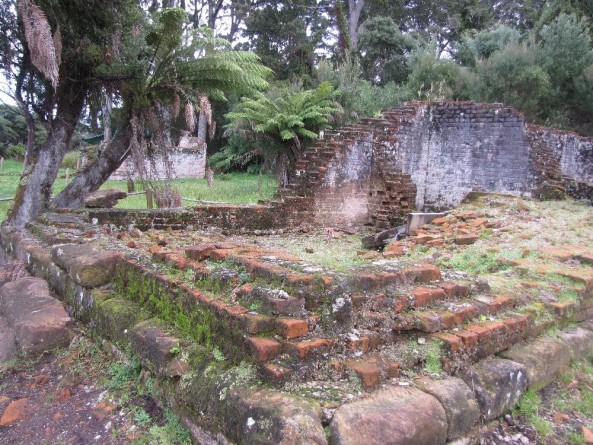
The ruins of the notorious penal colony of Sarah Island, Strahan
The miners and piners of boom and bust towns are attractions in Tasmania. We visited a huon pine sawmill in Strahan – no logging is allowed today and only old driftwood is used – to watch craftsmen at work. In the old “silver city” of Zeehan, we visited the fascinating West Coast Pioneers’ Museum which tells the story of the history of the west Coast and its rich pioneering past in photographs, mining memorabilia, locomotives and machinery. This huge outdoor mining museum has one of the finest collections of minerals in the world – including the spectacular glowing orange mineral called crocoite (lead chromate) – Tasmania’s mineral emblem.
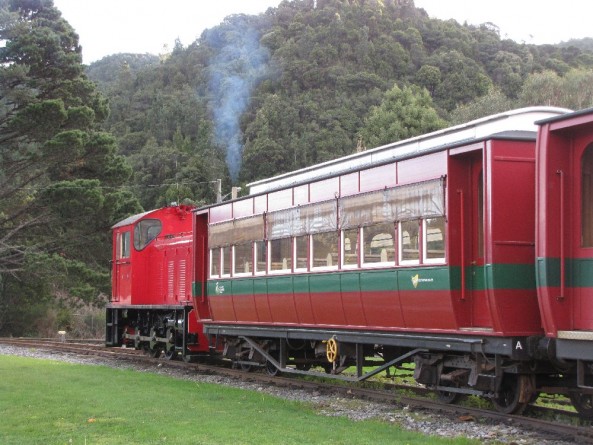
The west coast wilderness railway, Tasmania
We headed across the Pieman river to the old goldrush village of Corinna, deep in the forests. The river is named after cannibal convict baker, Thomas Kent, who escaped from Sarah Island and baked a few of his fellow escapees into pies! We had to hail a one man, one car pont to cross the river. The old settlement has been restored as the Corinna Wilderness Experience, an eco-resort where we stayed in quaint old miners cottages with mod-cons like heaters and hot water. In 2008 the old Tarkine Hotel was reopened after being closed for a century – and served the first food and beverages for decades! We were in deep forest, the southern boundary of the Tarkine wilderness.
At Corinna Wilderness there are fantastic wilderness day walks along the banks of the Savage, Pieman and Whyte rivers – or you can kayak and go platypus and freshwater lobster spotting. We came across loads of wallabies on our walks. One of the highlights of our visit to Tasmania was a day cruise down the Pieman River to the river mouth on a vintage wooden schooner build 75 years ago out of huon pine – the oldest still in service in the world (It’s in the Australian register of historic vessels.)
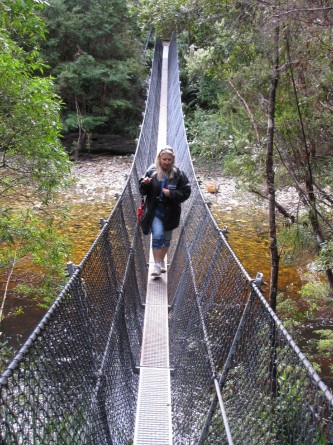
Crossing a suspension bridge across the Gordon River, Tasmania
We passed through dense forest, feeling as if we’d reached the heart of the Tasmanian wilderness. The fagus – the deciduous beech – was turning yellow, a wonderful sight.
We finished our tour of Tasmania in Cradle Mt National Park – in what they call cradle country. These alpine highlands, a 1262 sq km park, are home to Lake Clair – and Mt Ossa (1617m), Tasmania’s highest peak. Nine thousand hikers come from all over the world to do the week long overland track – but you can also do some wonderful day trails. We walked about ten kilometres a day around Dove Lake, dodging wombats on the boardwalk which go for your ankles if they feel threatened!
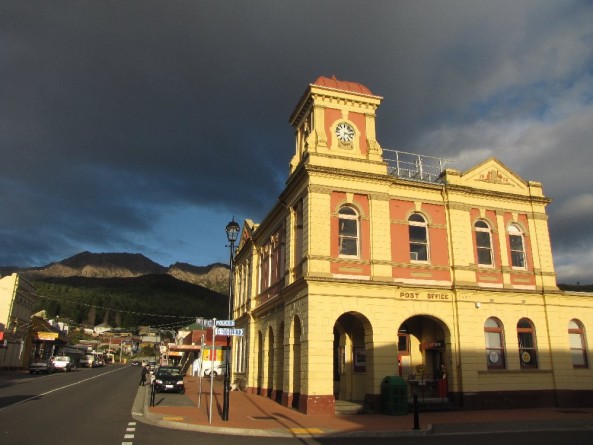
The old Victorian mining town of Queenstown in Tasmania's high country
The landscape is very scenic – glacier sculpted mountain peaks, deep river gorges and wild moorlands. We stayed in a luxury spa chalet at Cradle Mt Wilderness Village – a member of Innkeepers Tasmania. Our spa bath overlooked a secluded stretch of bush – and we could watch lots of local wildlife from the balcony. They have sixty or so self-catering chalets with possums on the roof – and wallabies and pademelons around the chalets. If you don’t feel like making dinner you can eat at one of the ski lodges.
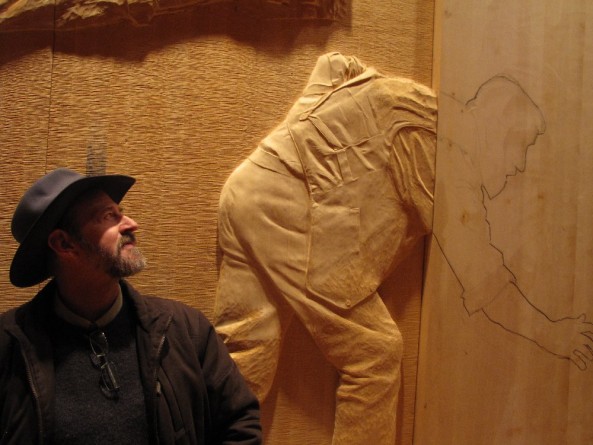
Greg Duncan, carver of the wall in the wilderness, Derwent Bridge, Tasmania
* Graham Howe visited Tasmania as a guest of Qantas, Tourism Australia and Tourism New South Wales. To find out more about new tourist attractions and destinations across Australia and in Tasmania – see www.australia.com, www.innkeeper.com.au, www.worldheritagecruises.com.au and www.discovertasmania.com









